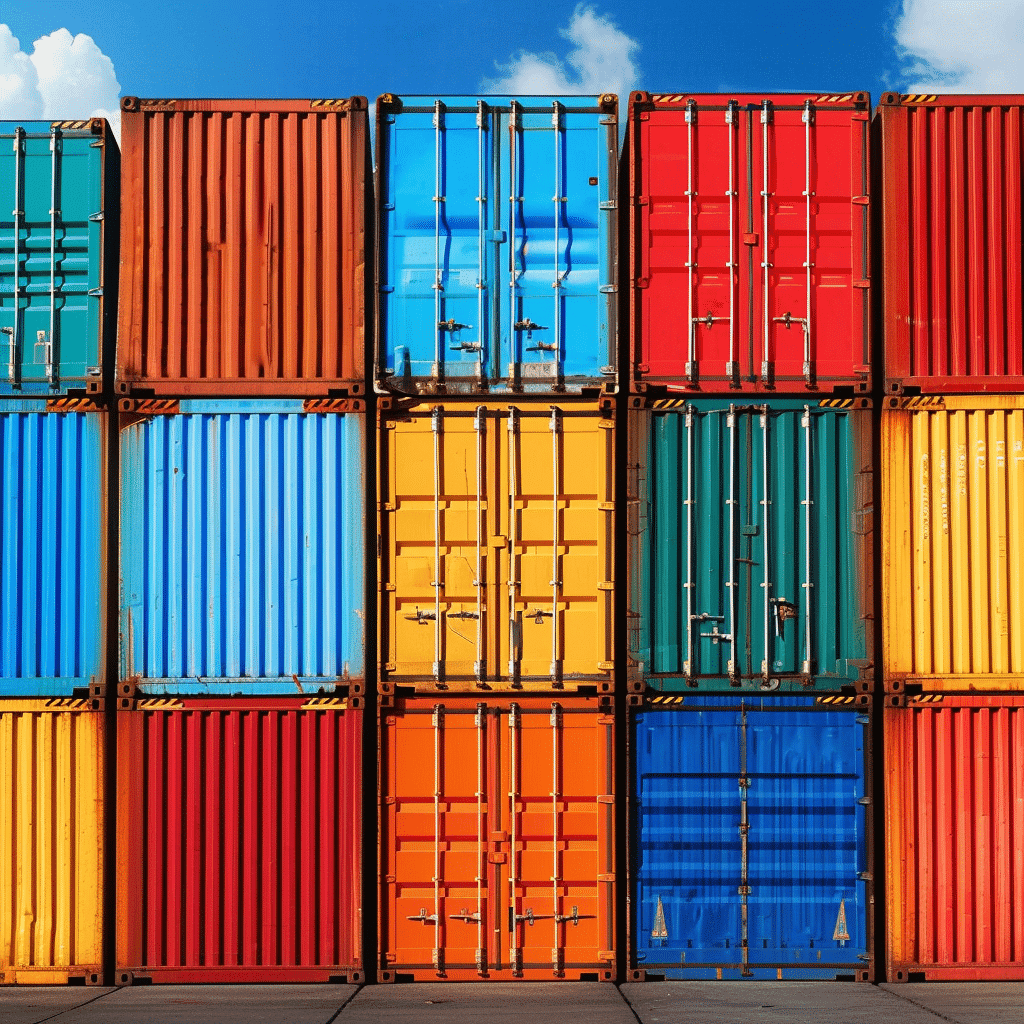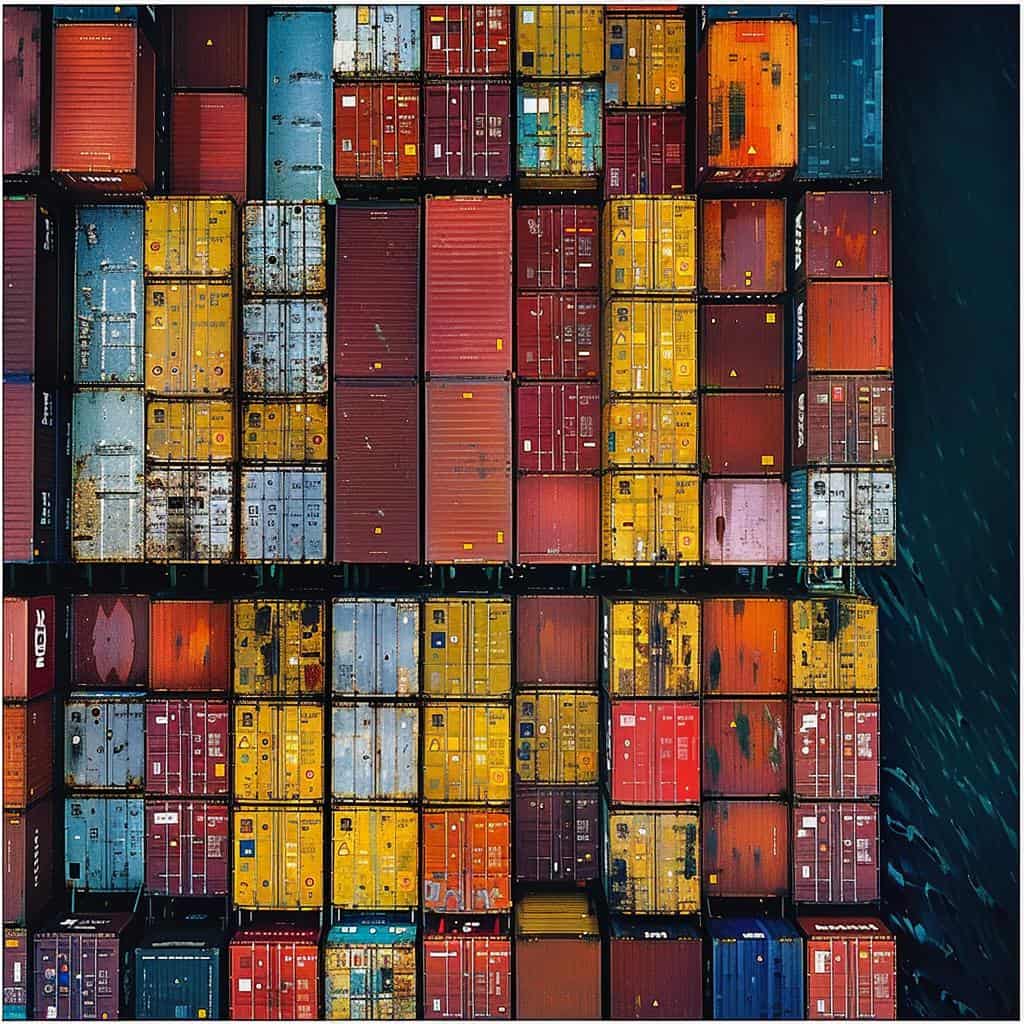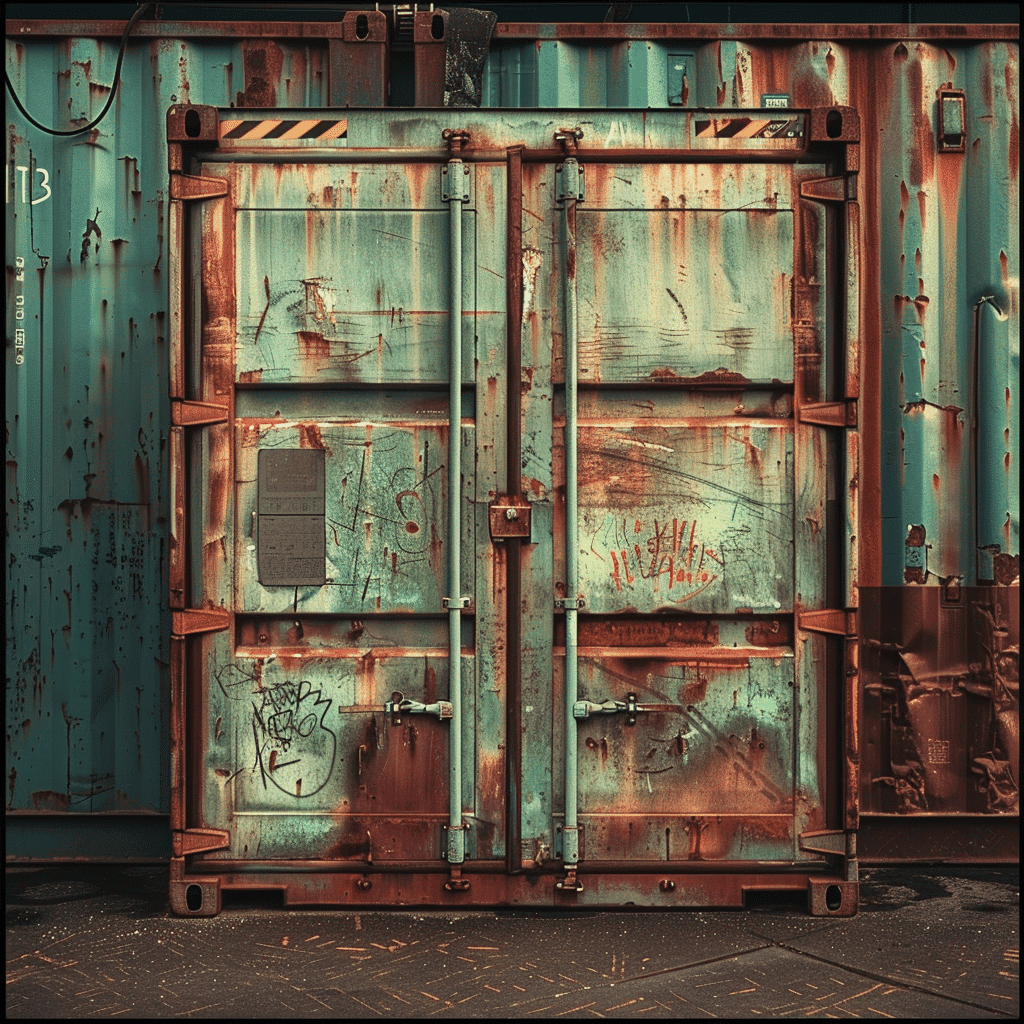Ever gazed at a dock full of shipping containers and wondered about their rainbow of colors? You’re not alone. Believe it or not, these colors aren’t just for show. They’ve got specific meanings, serving as a silent language in the world of transport and logistics.
In this article, you’ll learn how the color of a shipping container isn’t merely aesthetic, it’s a vital tool for enhancing efficiency and safety. Let’s decode this colorful mystery together, shall we?
The Importance of Color in Identifying and Classifying Shipping Containers
In the world of shipping, you mightn’t realize that the color of a container can play a crucial role in its identification and classification. Shipping container colors aren’t just for aesthetics, they serve a practical purpose in the shipping industry. This, of course, is regarding the shipping containers in transit, and not regarding renting or buying shipping containers.
Different colors can signify various aspects, like the container’s owner, its contents, or its destination. For various reasons, including quick identification or branding purposes, shipping containers are often painted with specific container colors.
The color-coded system aids in container identification, making it easier to sort and locate them amidst the vast sea of containers. So, you see, container paint isn’t just about making these massive metal boxes look good, it’s a functional aspect of the shipping industry’s operations.
The Meaning of Colors
With the myriad of colors you see on shipping containers, it’s not just about catching your eye, each hue has a specific meaning tied to it. Companies use these colors as a form of identification, ensuring the smooth transportation of their cargo.
A shipping container painted in a particular color can indicate the contents within, the destination (which is very useful when we are talking about moving shipping containers), or even the owner. It’s not simply about aesthetics. Each color serves a purpose and facilitates the easy identification of containers amidst the sea of cargo.
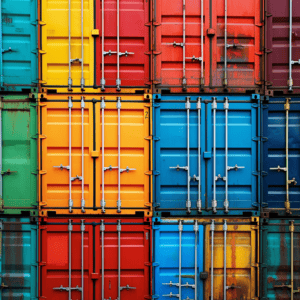
White Containers
Now, let’s dive into those white shipping containers you often see. The color white is a popular choice for several reasons. One key reason is its ability to reflect sunlight, keeping the container cooler than darker colors. This can be particularly important when shipping goods sensitive to heat.
White containers, like any other shipping container, are often repainted by leasing companies. Regular repaint jobs not only maintain the aesthetic appeal but also provide an extra layer of protection against the elements. Although,
Blue Containers
Shifting your attention to blue containers, you’ll find that these also have distinct advantages. Blue containers are often favored on cargo ships due to their visibility. They’re easily identifiable against the backdrop of the sea and sky, making them a preferred choice for many freight companies.
In fact, you might notice a number of companies that use the RAL color chart to identify their containers, repainting them in a specific shade of blue. This not only helps in easy identification but also ensures that the containers reach their correct destination without any confusion. In a sea of containers, having a distinct color can mean the difference between smooth operations and logistical nightmares.
Green Containers
You’ll find a number of green shipping containers in the freight industry, each with their own significance. The green color is often chosen for containers due to its association with certain brands and logos. Some companies choose this color specifically for its visibility and distinctiveness.
Other times, containers are initially a different color but are repainted green to match a company’s brand or when they’re repurposed for different uses. The industrial finishes used are designed to withstand harsh weather conditions and long journeys.
Red Containers
When it comes to the symbolism of red shipping containers, there’s more than meets the eye. Red containers are a popular color in the shipping industry, especially for dry cargo. One of the main reasons is that red is highly visible, aiding in the loading and unloading of goods, which should go as smoothly as possible to avoid improper container stacking.
In the hustle and bustle of a busy port, spotting a red container is easier, which streamlines processes. Now, don’t confuse red containers with those for frozen cargo. They’re typically not used for this purpose. Instead, they’re ideal for goods that don’t require temperature control.
Yellow Containers
In the world of shipping, you’ll often spot yellow containers, a color that carries its own significance. The yellow color isn’t just for show; it has a meaning tied to its function, location, and the information it carries. This hue is typically used by suppliers to denote specific types of goods, or to signal that the interior of the container requires special attention.
Yellow is also a color that stands out, making it easier to spot in a sea of shipping container colors. This can be crucial in busy ports or shipping yards. Understanding these color codes can help you navigate the complex world of shipping and logistics.
Brown Containers
Many brown containers are out there in the shipping world, and they’re not just chosen for their earthy hue. Among the various shipping container colors, brown is one of the main ones.
It’s important to note that the type of container plays a part in color selection, but it’s not the only reason. Brown containers, for example, are often chosen for their practicality. They don’t show dirt or grime as easily as lighter colors, which is a significant advantage in the shipping industry.
Furthermore, brown is a color that doesn’t absorb heat as much as darker colors.
This section has hopefully shed some light on the reasons behind the prevalence of brown containers in the shipping world.
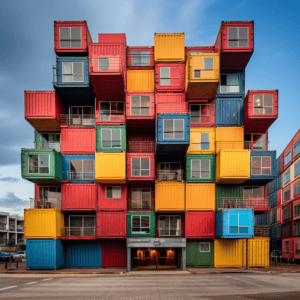
Frequently Asked Questions
What colors do shipping containers come in?
Shipping containers come in a variety of colors, each serving a specific purpose or representing a particular brand. Common colors include brown and maroon, often used by leasing companies, and blue, which is typically used for refrigerated or frozen cargo.
Green containers are generally used for agricultural products, while red containers are designated for hazardous materials. White containers are commonly seen and are used for perishable cargo that requires special handling. Yellow containers are used for bulk cargo like chemicals, grains, and minerals. Additionally, shipping containers can also be found in beige, with an interior color of light grey. These colors not only serve functional purposes but also assist in easy identification for storage, handling, and brand recognition.
What colors are best for shipping containers?
The best colors for shipping containers depend on various factors, including functionality, visibility, and maintenance. Darker colors like maroon and brown are popular choices, especially for leasing companies, because they age better than lighter shades and require less frequent repainting. This makes them more cost-effective in the long run and easier to sell. On the other hand, bright and light colors, while more visually striking, demand more effort and expense for maintenance compared to neutral shades.
Neutral colors tend to be more practical for painting shipping containers. The choice of color can also be influenced by the container’s intended use, as different colors are used to signify different types of cargo or to align with brand identities. For example, blue is often used for refrigerated containers, while red might indicate hazardous materials. Ultimately, the best color for a shipping container depends on its intended use, the preferences of the owner or leasing company, and practical considerations regarding maintenance and visibility.
What is the best paint for shipping containers?
The best paint for shipping containers is marine-grade waterborne direct-to-metal (DTM) paint. This type of paint is specifically designed to be durable, water-resistant, and corrosion-resistant, making it ideal for the harsh conditions that shipping containers often face. Additionally, marine-grade waterborne DTM paint contains lower levels of volatile organic compounds (VOCs) compared to other types of paint, which makes it a safer option for both the environment and the people applying it.
Its formulation is tailored to adhere well to metal surfaces, providing long-lasting protection and maintaining the container’s integrity over time. This makes it a top choice for those looking to paint shipping containers, whether for maintenance, aesthetic purposes, or repurposing into structures or storage solutions.
What is the most popular color of shipping container?
The most popular color for shipping containers is white. This color is commonly used for transporting dry cargo, such as textiles, electronics, and non-perishable foodstuffs. White containers are favored for their versatility and the ease with which they can be maintained and cleaned.
Their light color also makes them more visible and easier to identify, which is beneficial in the busy environments of ports and shipping yards. The prevalence of white shipping containers underscores their practicality in the global transportation of a wide range of goods, making them a staple in the shipping industry.
Conclusion
So, you see, the color of a shipping container isn’t just about looking pretty. It’s a vital cog in the vast machine of global logistics, ensuring efficiency and safety.
As they say, ‘there’s more than meets the eye’.
Next time you see a rainbow of containers at the dock, you’ll know it’s not just a colorful spectacle, but a meticulously organized system hard at work.
